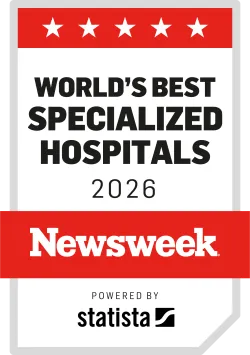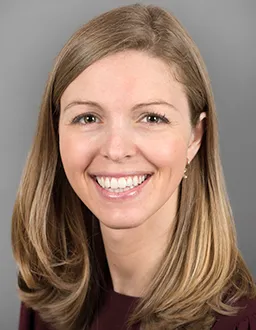Breadcrumb
- Home
- Conditions & Treatments
- X-linked Myotubular Myopathy
What is X-linked myotubular myopathy?
X-linked myotubular myopathy (XLMTM or MTM) is caused by a genetic mutation on the X chromosome, a rare disease that causes muscle weakness. It occurs almost exclusively in males, affecting about 1 in 50,000 newborn boys worldwide. MTM is a form of centronuclear myopathy and is sometimes called X-linked centronuclear myopathy.
Boys with myotubular myopathy usually have muscle weakness at birth, although occasional milder forms may not cause problems until adolescence. Boys with severe MTM may survive only into early childhood, while those with milder forms may have slow progression of the disease and live into adulthood.
Girls and mothers of boys with MTM who carry a mutant copy of the MTM1 gene on one chromosome are usually unaffected, but in some cases may have mild or moderate degrees of weakness.
The muscle weakness can also affect bone development, head and face shape, and eye movement.
Symptoms & Causes
What are the symptoms of myotubular myopathy?
Infants with severe myotubular myopathy are very weak from birth and appear limp or “floppy.” They often have difficulty feeding and breathing on their own because of weakness in the muscles used to suck, swallow, and breathe. The breathing difficulties may be severe enough to require breathing assistance at night or 24-hour mechanical ventilation.
As they grow, children with MTM tire easily and may not have enough strength to sit, stand, or walk. They often have skeletal problems such as hip dysplasia and curvature of the spine (scoliosis).
What causes X-linked myotubular myopathy?
XLMTM is caused by mutations in a gene called MTM1, which is located on the X chromosome. In boys, who have only one X chromosome, a mutation on that one copy of the gene causes MTM. In girls, who have two X chromosomes, having one normal copy is usually enough to prevent weakness, but some so-called “carriers” of MTM1 mutations may have significant degrees of weakness.
The genetic mutations in MTM1 disrupt an enzyme called myotubularin, which maintains muscle cells and helps muscles contract. If children don’t have enough functioning myotubularin, they will develop varying degrees of muscle weakness.
In 80 to 90 percent of cases, the MTM1 mutation is inherited from the mother. In most other cases, the mutation happens after conception and the mother is not a carrier. If the mother is a carrier, the chance is 50 percent that she will pass the mutation on to her children.
Diagnosis & Treatments
How is myotubular myopathy diagnosed?
In addition to signs of muscle weakness, MTM has other features that will help physicians make the diagnosis. These include a high forehead, a long face, a large head, long fingers and toes, droopy eyelids, and undescended testicles.
In some cases, a muscle biopsy may be recommended to look for certain telltale changes to the muscle tissue. But in most cases, a diagnosis of MTM is confirmed through genetic testing.
How is myotubular myopathy treated?
Treatment for myotubular myopathy is supportive and includes assisted breathing, feeding, and motor support. At Boston Children’s Hospital, we care for children with MTM in our Neuromuscular Center, which brings together clinicians in respiratory care, orthopedics, physical therapy, genetics, and other specialties. The team provides coordinated support, including home ventilator support for children with breathing difficulties, via the Critical Care, Anesthesia, Perioperative, Extension (CAPE) Home Ventilation Program, and G-tube feeding for children unable to swallow food. Our Augmentative Communication Program can help children who need assistive communication devices.
Children with myotubular myopathy are often monitored by ophthalmologists, orthopedists, and orthodontists to address specific visual, skeletal, and dental complications of MTM. We also provide genetic counseling and can conduct detailed genetic testing to learn more about possible inheritance patterns in the family.
Gene therapy for X-linked MTM is now in the early stages of testing around the country. To date, it has shown promise in restoring muscle strength. Your clinician can provide more information.
Research & Innovation
Our areas of innovation for myotubular myopathy
The Beggs Laboratory in the Manton Center for Orphan Disease Research conducts in-depth research on the genetic causes of myotubular myopathy and related conditions, in collaboration with medical centers around the world. This work has been key in developing gene therapy treatments that are now in early clinical trials. Learn more.



